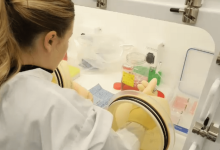.
Every business today needs a website as part of its strategy, whether to disseminate information internally, close sales, capture the public or carry out marketing campaigns. And one of the most important elements of building a website that is often overlooked is image optimization for the web.
Hardly a site that has only text and icons on its interface. In order to attract the public, facilitate their identification, illustrate some content and guide the user’s gaze, it is essential to use images. However, if you don’t know how to add these visuals, they can negatively impact your site’s loading speed, which detracts from the user experience.
An optimized website works better on more machines, is responsive and loads faster. And images are one of the factors that most think about this optimization. In addition, they also play an important role in your SEO work, affecting the page’s discoverability chances.
To help with that, here are some image optimization tips for the web that you should implement right away. Check out.
1. Name the files
Search engines are not yet able to observe and understand an image in the same way as human beings. At least not with complete accuracy. Therefore, in order to identify the content of a photo, it evaluates other factors, such as the file name or other associated texts.
This means that to improve your page’s SEO, you need to be aware of the naming of the image files used on your site. Preferably, these names should be informative and complete, but still efficient, not including too many unnecessary terms. A name that is too long can also affect website performance.
For example, when creating a new image file, it usually comes with a default name like “IMG001”. Before putting it on your site, change the file name to something more descriptive. For example “product-name”. This way, search engines can also more easily identify your content.
2. Invest in Alt Tags
Sometimes the best way to describe an image is with a longer sentence, which is not suitable for file naming. If so, your next resource is Alt Tags. They are text-shaped placeholders that you can add to an image file. So when a user does their search, they can also find the Alt Tag terms.
Let’s say you have an image named “car-red” on your website, but you want to describe the image in more detail. You can create Alt Tags with terms like “red car walking on the road”, mention the model, size, among other characteristics of the object and the surrounding environment.
All of this is typically done by the website builder platform. It is important that the main keyword of the image is also included in the Alt Tag.
3. Match the image to the correct content
In addition to evaluating the image itself, its title and Alt Tags, search engines also take into account the context in which it is inserted. So it matches all the terms with other words in the text on the page to find out if the image is connected to the content.
If the terms used in the Alt Tag and filename are not consistent with the page’s content, it may lose some positions in search results. And even if the user arrives at the site, it may not be the audience you want to attract.
Another interesting point is that the image has a stronger correlation with the surrounding content. That is, you should use keywords related to the title and Alt Tag of the image within the closest text.
4. Choose the proper definition and size
If you intend to use any image resources on your website then it is important that they are of good quality and match the responsive feature. Very small images are distorted on larger screens, which greatly detracts from the user experience. However, many also make the mistake of going to the other extreme, using much higher definition images than necessary.
It may even be that the image becomes clearer and more detailed, but this also makes the page heavier. Therefore, it takes longer to load, which is one of the main factors in the quality of the user experience.
It is more efficient to use images with proper definition that align with the other elements of the site. In the end, the extra detail is hardly visible. Even more so on mobile.
5. Perform image compression
Another possible way to optimize images is through data compression. You can pass the file through compression software, which reduces the amount of redundancy in the file’s code. And with fewer digits in the code, it’s lighter and easier to carry.
Remember to test the image quality within the website after compression, as depending on the method used, this can affect the final result. There are also cases where the form of compression does not interact well with the platform itself, which lowers the image quality.
6. Choose the ideal format
There are several file formats for images, each one following its own logic in its code. In everyday life, most people do not notice the difference between one or the other, but this becomes a very important factor when placing an image on your website.
The three most common recommended formats are GIF, PNG and JPG, as they are more compatible with a large number of tools and are not too heavy. You can check on your platform which format is recommended to optimize your performance.
With these tips, optimizing images on your website is not difficult. All it takes is a little planning and guidance to improve the quality of the images used, both for your SEO work and for greater efficiency on your website.
Have any more tips on how to optimize images for the web or other improvements? Tell us in the comments down below!
.









